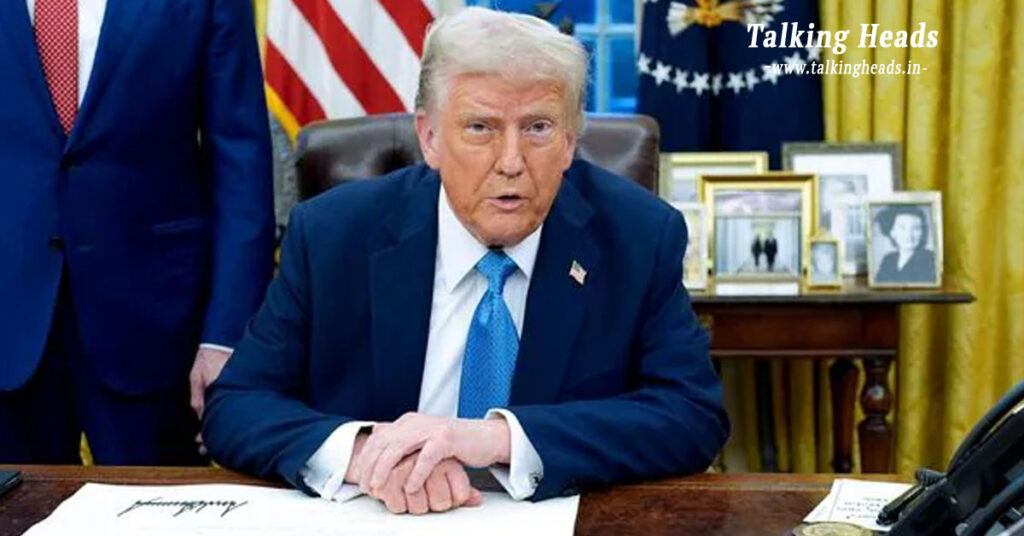Trump confirms destruction of Fordow, Natanz, and Isfahan nuclear facilities; IRGC responds with largest-ever missile barrage on Israel
U.S. Launches Precision Strikes on Iran’s Nuclear Infrastructure
In a dramatic escalation of tensions in the Middle East, the United States launched airstrikes targeting three major nuclear sites in Iran—Fordow, Natanz, and Isfahan—early Sunday morning (IST). The attack took place around 4:30 AM IST and marked a critical turning point in the ongoing Iran-Israel conflict that has gripped the region for ten consecutive days.
Table of Contents
U.S. President Donald Trump, who remains the key decision-maker in this conflict under emergency national security provisions, addressed the nation three hours after the strike. In his televised speech, Trump declared that the targeted nuclear sites had been “obliterated” and warned Iran against further escalation.
“Fordow was hit with a full payload of precision bombs,” Trump said. “Iran must now choose peace or face even greater consequences.”
Iran Responds with Missile Barrage on Israeli Cities

In swift retaliation, Iran’s Islamic Revolutionary Guard Corps (IRGC) launched what it described as the largest missile attack ever against Israel. Fourteen Israeli cities, including Tel Aviv and Haifa, were struck, with both military and residential areas hit. According to initial reports from The Times of Israel, several missiles landed in densely populated neighbourhoods, causing widespread panic.
As of now, 23 civilians have been reported injured in Israel, with damage assessments still underway. The IRGC claimed the strikes were aimed at “critical Israeli military installations,” signalling Iran’s intent to match America’s aggression with force.
Trump, Vance Monitor Situation from White House Situation Room
Official images released by the White House showed President Trump and Vice President J.D. Vance closely monitoring the strikes from the White House Situation Room late Saturday night (Washington time). Also present were Chief of Staff Suzy Wills, Joint Chiefs of Staff Chairman General Dan Kane, and key cabinet members.
The administration described the operation as a “necessary act of deterrence” following rising intelligence suggesting that Iran was fast-tracking its nuclear capabilities beyond acceptable thresholds.
Mounting Death Toll: Over 657 Killed in Iran, 24 in Israel
As the conflict intensifies, human casualties are mounting rapidly. According to reports from the U.S.-based Human Rights Activists News Agency, 657 people have been killed in Iran since the clashes began on June 13, with over 2,000 injured. However, Iran’s Health Ministry has confirmed only 430 deaths and 3,500 injuries, indicating possible discrepancies in casualty reporting due to restricted media access.
In Israel, as of June 21, 24 individuals have died and over 900 have sustained injuries due to Iranian missile strikes and ongoing regional violence.
Strategic Targets: Fordow, Natanz, and Isfahan
All three Iranian nuclear sites targeted—Fordow, Natanz, and Isfahan—are crucial to Tehran’s uranium enrichment program. Fordow, in particular, has long been a subject of international concern due to its fortified underground structure and potential to produce weapons-grade material.
Natanz, located in central Iran, houses some of the country’s most advanced centrifuges, while Isfahan serves as a processing and storage hub for enriched uranium. The coordinated U.S. strike aimed to disable Iran’s nuclear production capabilities decisively.
Diplomatic Fallout: Global Tensions Rise
The U.S. airstrike and Iran’s retaliatory missile attack have drawn international concern. The United Nations has called for an emergency Security Council meeting, while major global powers—including Russia, China, and members of the EU—have urged both nations to exercise restraint.
Analysts warn that the current tit-for-tat military action risks spiraling into a broader regional war, dragging in countries like Lebanon, Syria, and even Saudi Arabia, which has recently moved to bolster its air defence systems.
Trump’s Warning: “Peace or Punishment”
President Trump ended his address with a direct ultimatum to Tehran. “This was a message, not just a military operation. If Iran values the future of its people and its place in the world, it must stop now. Otherwise, what happened today will seem like a warning shot compared to what comes next.”

Despite growing calls for de-escalation, both Iran and Israel appear determined to continue their confrontation, with U.S. military forces on high alert in the region.
Conclusion: A Conflict at the Brink
As the death toll rises and the threat of broader warfare looms, the world watches anxiously. With nuclear facilities bombed, cities under missile fire, and diplomacy faltering, the Middle East may be inching toward its most dangerous conflict in decades.










